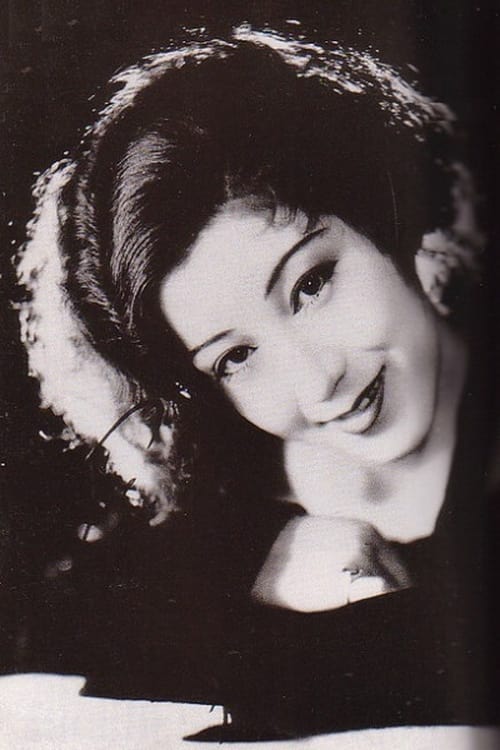
Takako Irie
출생 : 1911-02-07, Tokyo, Japan
사망 : 1995-01-12
약력
Takako Irie (入江 たか子 Irie Takako, 7 February 1911 – 12 January 1995) was a Japanese film actress. Born in Tokyo into the aristocratic Higashibōjō family (her birth name was Hideko Higashibōjō (東坊城 英子 Higashibōjō Hideko)), she graduated from Bunka Gakuin before debuting as an actress at Nikkatsu in 1927. She became a major star, even starting her own production company, Irie Productions, in 1932. One of Kenji Mizoguchi's silent film masterpieces, The Water Magician, was produced at that company with Irie starring. She appeared in many advertisements, as well as on fans and other commercial goods. Irie was also the subject of a folding screen painting by Nihonga artist Nakamura Daizaburō, which appeared in the 1930 Teiten (Imperial Exhibition), and which is today in the collection of the Honolulu Museum of Art; toy dolls were also produced based on this image.
In the postwar period, Irie became known as a "ghost cat actress" (bakeneko joyū) for appearing in a series of kaidan (ghost story) movies. One of her late memorable roles was in Akira Kurosawa's Sanjuro, where she plays Mutsuta's wife, the lady who warns Sanjuro (Toshirō Mifune) that "the best sword stays in its scabbard".
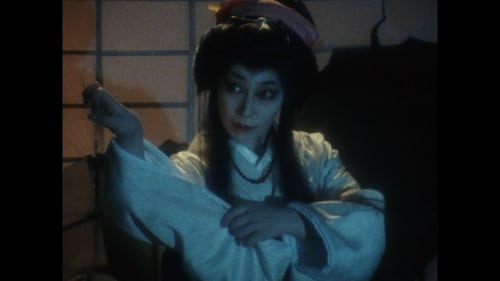
Akiko Ryuzoji
198X년, 젊은 시나리오 작가 시무라 료헤이는 최근 슬럼프에 빠졌다. 그러면 기회가 생긴다. 그는 일본의 클레오파트라로 알려진 전설적인 미녀 류조지 아키코의 컴백 영화의 대본을 써달라는 요청을 받는다. 료헤이는 바로 아키코를 만났지만, 그의 눈을 믿을 수가 없었다. 아키코는 이미 노파임에도 불구하고 젊고 잘 생겼다. 료헤이는 자신의 시나리오 작업을 하기 위해 아키코의 집으로 이사했다. 저택에서 아키코와 함께 사는 영화감독 미즈모리는 료헤이에게 "아키코와 자지 마라"고 경고한다. 사실, 료헤이는 놀라운 이유로 그 일에 선택되었다...

Shino
화재로 파괴된 도시에 관한 신문 기사를 읽은 후, 에구치는 논문을 쓰기 위해 보낸 여름을 회상하게 된다. 그 곳은 "일본의 베니스"로 불리는, 아름다운 운하가 있는 마을이었다. 마을에 도착한 그를 맞이한 것은 야스코였다. 그녀의 다른 가족들은 보이지 않았다. 첫날밤에 에구치는 우는 소리를 들었다. 그 이유를 찾으면서 자신이 한 가족을 분열시키고 있다는 갈등에 빠져 든다. 그는 꿈같은 마을이라고 생각했지만 일부 주민은 그런 그를 비웃는다. 파멸과 죽음만이 유일한 미래라는 생각이 그들을 지배하고 있었다.
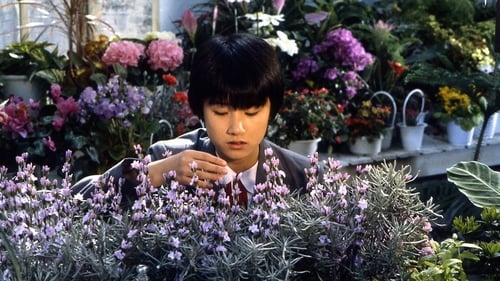
Tatsu Fukamachi
중학생 소녀 가즈코는 친구들인 고로, 가즈오와 함께 과학실 청소를 하다가 플라스크에서 올라온 강한 라벤더향을 맡고 정신을 잃는다. 사흘 후, 가즈코의 주위에는 이상한 사건들이 일어나기 시작한다. 한밤중에 지진이 일어나서 고로의 집이 불에 타고, 다음날 아침 고로와 함께 교통사고를 당하는 순간, 전날 아침으로 되돌간다.

Chizu Igarashi
명탐정 킨다이치가 이제까지 휘말린 사건 중 가장 복잡하고 미스테리한 살인이 일어났다. 폐허가 된 옛 병원 건물에 마치 풍경처럼 매달린 남자의 머리가 발견된 것. 현장을 신고한 사람은 한 젊은 여자로부터 웨딩사진 촬영을 의뢰 받은 사진사 청년. 희생자는 음악가 토시오이고, 사진 촬영을 의뢰한 젊은 여인은 그의 사돈인 코유키로 그녀는 현재 실종 상태다. 친구들은 토시오가 결혼해달라며 코유키를 쫓아다녔다고 증언을 하는데, 사실 코유키에게는 다른 남자가 있었다.
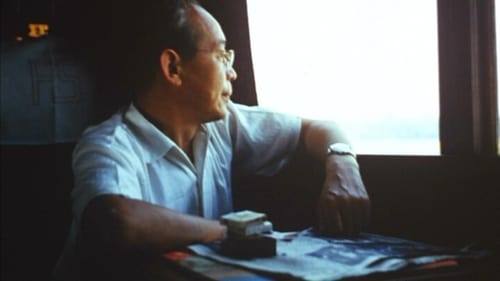
Kenji Mizoguchi: The Life of a Film Director (Aru eiga-kantoku no shogai) is a 1975 Japanese documentary film on the life and works of director Kenji Mizoguchi, directed by Kaneto Shindo (Onibaba). It runs 150 minutes and can be found on the second disc of the Region 1 Criterion Collection release of Ugetsu (1953).
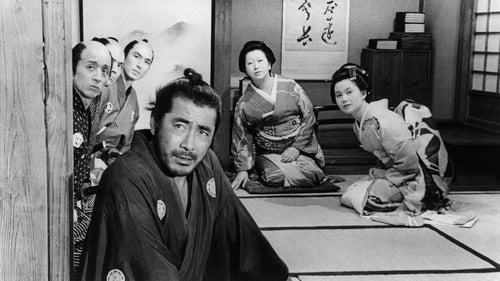
Mutsuta's wife
늦은 밤 일군의 젊은이들이 외딴 집에 모여 그들의 성에서 일어나고 있는 부패를 일소하기로 결의한다. 하지만 곧 그들은 그곳에 또 한 명의 낯선 사람이 자신들의 얘기를 엿듣고 있다는 것을 알아챈다. 그는 산주로라는 이름의 떠돌이 사무라이로 그 젊은이들이 잘못된 판단을 하고 있다며 비웃는다. 그리고는 이 슬기롭지는 않지만 정의로운 젊은이들과 뜻을 같이 하기로 한다.

This most celebrated all-star movie version of the popular series features Tsukigata Ryunosuke as Mito Komon, the sage who wanders the countryside rectifying government corruption along with his faithful attendants Suke and Kaku.

A remake of Kaidan Saga yashiki (1953).

Court Lady Fujinami
A power struggle in the fief of Okazaki causes the death of Namiji, a nobleman's daughter. As her fiancé seeks revenge, he finds Namiji's cat helping him. Co-starring Shintarô Katsu and Takako Irie.
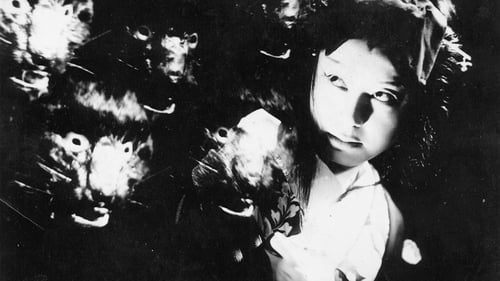
A kabuki actress is murdered. Her pet cat laps its mistress's blood and becomes a demon possessed by the vengeful murder victim.

The Great White Tiger Platoon was part of the Aizu clan's last ditch efforts to stop the advance of Imperial troops after the fall of the Tokugawa Shogunate. Meant to be a reserve unit as it was made of the young, 16-17 year old sons of Aizu samurai. Their story is one of the great tragedies of the Boshin War (1868-1869) as they were called into action. Getting cut off from the main body of their platoon, a group of 20 from the 2nd squad retreated to Iimori Hill, where they looked down upon fires surrounding Aizu Castle and thinking that the castle has fallen and all is lost, they choose to die as samurai by committing seppuku. A superb rendition of this true story that shows the true honor of the samurai.

The Lord of Okazaki is killed by his brother-in-law. Although the Lord's widow bears a child, she is also killed. Then, a ghost cat begins stalking in the castle.

Okoyo, the mistress of Lord Arima, fears that she is being replaced by a younger woman named Otaki. In a fit of jealousy, she kills the younger girl. The dead woman's cat licks her blood and becomes a demon, seeking revenge on Okoyo
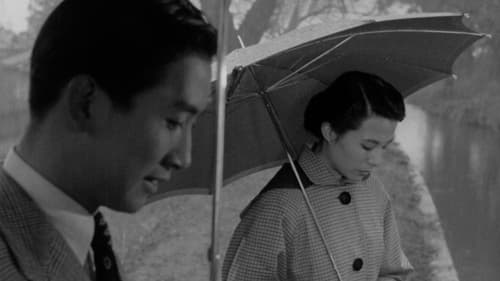
번역일로 먹고 사는 마유미는 결혼을 하지 않아 주위 사람들의 걱정을 산다. 마유미는 결혼 생각이 없다며 대답을 피하지만 사실 그는 오랫동안 한 여성만을 좋아하고 있다. 한편, 마유미는 우연히 만난 친구에게 새로운 일을 제안 받는다. 바로 미군과 사귀는 여성들에게 영어 편지를 대신 써주는 일이다. 기노시타 게이스케 감독이 각본을 썼으며, 다나카 기누요도 마유미의 고객으로 잠시 출연한다. 1954년 칸영화제 경쟁부문 상영.

Otoyo-no-kata
A woman loses her son through an evil conspiracy and commits suicide. Shortly afterwards a ghost cat begins haunting the conspirators. This is Takako Irie's first bakeneko (ghost cat) movie; it started a Daiei cycle which was very popular at the time in Japan.

Kôfuku eno shôtai - Invitation to happiness

A hospital melodrama where the conflict between love and friendship rules the faith of the protagonists.

After learning that he has accidentally killed a man in a fight, Unokichi must look after the man's pregnant widow.

Based on a short story by Dazai Osamu, produced under the national film law. The film's hero falls in love with the youngest daughter of a family he is visiting to arrange an engagement for his friend who has been drafted to fight in the war.
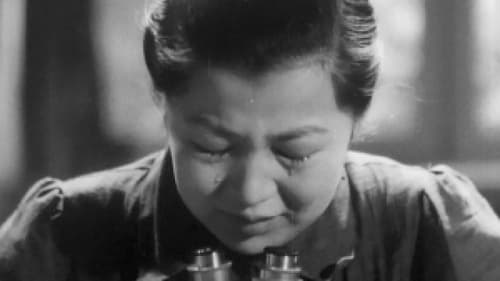
Noriko Mizushima, dorm mother
태평양전쟁 말기인 1944년. 전국 각지의 공장에서 군수 증산 운동이 시작된다. 정밀병기에 쓰이는 렌즈를 생산하는 동아과학에서도 남자는 100%, 여자는 50%의 증산 목표가 발표된다. 남자의 반이라는 목표에 자존심이 상한 여자 공원들은 스스로 목표치를 3분의 2로 높인다. 조장 와타나베 쓰루를 중심으로 여자들은 생산 증가를 위해 온 힘을 모아 노력하지만 얼마 안 가 피로가 누적되며 오해와 반목으로 무리가 생기기 시작한다. 하지만 상사들의 따뜻한 보살핌과 동료들 간의 이해를 통해 공원들의 결속은 더욱 강해지고, 그들의 노력 역시 보답을 받는다.

A 1942 film.

The premature death of a young mother serves as inspiration for her husband and son.

Set in Qingdao, China, a Japanese company locates an office there and begins work and cooperation with a local Chinese company for business. Many Japanese engineers also move to China, with their families, for the company in order to construct a canal. There are young Chinese resisting the Japanese in this area.

Makiko
What is marriage? Young couple in match-making wanted to know before they decide. They visited married couples of sisters and brothers. Love comedy in 1942.

Chiyono - widow
This epic depicts the battle between Uesugi Kenshin and Takeda Shingen. The focus of the story is the struggle by the unit leader in charge of the main supply wagons and the supply troops to transport materiel to the Uesugi army. To this are added episodes involving an itinerant woman.

OSHINO, the beautiful daughter of restaurant owners, is in love with SHIRASAGI the painter. But there is another young man, the son of a moneylender family, who is desperately in love with Oshino...

Yukiko
Adaptation of a novel by Nobuko Yoshiya that was serialized in "Shufu no tomo" between 1939 and 1940.

Jurobei, a kaisen tonya (wholesaler in port) in Awa, was wronged and killed on the day of the Dance Festival by the evil merchant & the chamberlin. His brother (Kazuo Hasegawa) vowed vengeance on the day of his brother's death. So every year the villains are worried during the Awa Dance Festival (which is part of the Obon festival), but nothing has ever happened, until seven years later...

When Sentarô’s father is killed by a drunken samurai, Sentarô avenges him. His deed puts him on the run and leaves his sister behind. While running from both the authorities and the assassins, Sentarô meets with the beautiful travelling-actress Oshima who takes him under her protection.
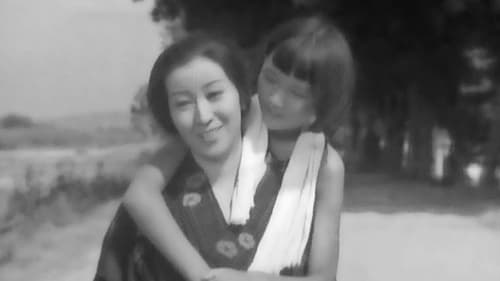
Tobiko Haseyama
Two young girls, Nobiko and Tomiko, go to the same school. The less fortunate girl Nobiko is one of the top students, while the rich girl Tomiko is not. At one time Tomiko's father was quite fond of Nobuko's mother.

A colourful study of theatrical life. Two acting troupes vie for the Kyoto market during the Genroku Era. Tojuro, an extremely popular actor, feels the limits to his acting when he sees his rival troupe put on a new type of play featuring its star, Nakamura. He has the famous Chikamatsu write a new play but cannot get used to the character he is to play in it.
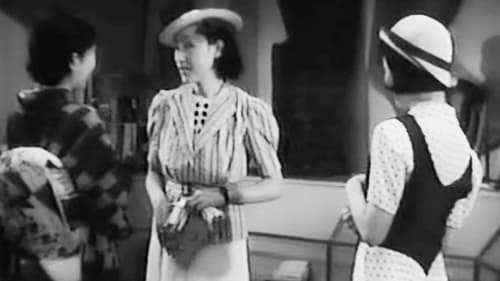
Toyomi
Part 2 of a 2-part romance (fist part - Kafuku zempen) based on a story by noted author Kikuchi Kan. In the second half, we discover that Toyomi is pregnant -- and while Shintaro and Yurie are on their extended honeymoon, she bears his child, a girl named Kiyoko. She is supported in adversity by Michiko -- and gets considerable moral support from not only her own mother but also from Shintaro's mother and siblings. Even more surprisingly, Yurie strikes up a friendship of sorts with her. When Yurie learns that the child is Shintaro's, she convinces Toyomi that it would be best to let Shintaro (and her) raise Kiyoko, so Toyomi can get on with making a proper life for herself. Tearfully, Toyomi agrees. Sometime later, Michiko goes to visit Toyomi -- and sees her at work, as a kindergarten teacher.
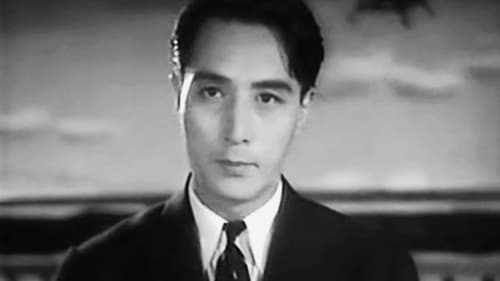
Toyomi
Part 1 of a 2-part romance based on a story by noted author Kikuchi Kan. The central character here is Toyomi (played by Takako IRIE, star of Mizoguchi’s "Water Magician), a rich young woman in love with Shintaro (Minoru TAKADA), a rich young man. Unfortunately, Shintaro’s father is in the process of arranging a marriage for him with Yurie (Chieko TAKEHISA), the scion of an even wealthier family. In order to avoid this, the two young lovers flee to Tokyo to live together. When Shintaro comes back to proclaim his intent to marry Toyomi, his father browbeats him into attending the long-arranged marriage meeting with Yurie. While Shintaro is back home, Toyomi goes on a vacation trip with her closest chum, Michiko (Yumeko AIZOME). At a class reunion, Toyomi is to distressed (at not having heard from Shintaro for so long), she doesn’t go out on the town with her classmates. Michiko, however, runs into Shintaro and Yurie (also out on the town), and pulling him aside, demands an explanation.

Kayo and Kuniko graduated from girls' school together and are as close as sisters. Kuniko's fiancé, Minakami, feels something that attracts him deeply towards Kayo. On the other hand, Kayo prays for the happiness of her best friend and marries a very ordinary man. However, at one point, this mediocre but increasingly ferocious husband died in an accident ... A triangular love story develops depicting a woman's heart that sways between love and morals. Based on a novel by Nobuko Yoshiya, there were originally two parts to the film (If Spring Comes & Fall Once Again), both supposed to be 85 minutes, but apparently what we have now is this 103-minute amalgam of the two.

The prewar film Haha no kyoku (Mother's Melody, 1937) is known for its place in Japanese film history as one of the top three melodramas as well as for its authorship: Yamamoto Satsuo is an auteur not usually associated with filming melodramas. Yamamoto made the film right after he moved, along with his mentor Naruse Mikio, to the Toho film company. A number of subsequent postwar mother's films adopted some of its essences, making it a genre-defining moment in Japanese cinema. This great melodrama is atypical of Yamamoto's output, much of which deals with political corruption and inequities within social institutions and offers a strong anti-establishment appeal.

주체적으로 변하는 여인의 모습을 담았다

Prewar jidaigeki starring Denjiro Okochi

Ohama
The sequel to the 1935 film Great Bodhisattva Pass

1930s Japanese film.

Michiko Nonoguchi, nurse
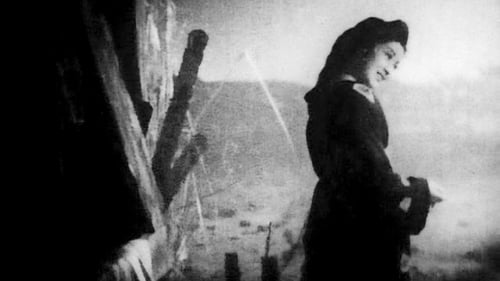
Producer
고아 출신 운전사인 무라코시 킨야와 사랑에 빠진 시라이토는 그를 법대에 보낸다. 그러나 운명의 장난은 이들을 살인 용의자로 법정에 세우는데...

Taki no Shiraito
고아 출신 운전사인 무라코시 킨야와 사랑에 빠진 시라이토는 그를 법대에 보낸다. 그러나 운명의 장난은 이들을 살인 용의자로 법정에 세우는데...

The second part of the melodrama based on the novel Les Misérables by Victor Hugo, the action of which is transferred to the era of the Meiji Revolution. The film has not survived.

The first part of a fascinating melodrama based on Victor Hugo's Les Misérables, the action of which is transferred to the era of the Meiji Revolution. The film has not survived.

Directed by Tomotaka Tasaka.

Workwoman
가난한 성악가 후지무라 요시오는 낡은 방에서 호텔 청소부 아야코와 행복한 나날을 보내고 있다. 어느 날 우연히 요시오의 노래를 들은 한 부자의 딸이 그에게 도움을 주고 후지무라는 큰 성공을 거둔다. 그러나 유명해진 후지무라는 아야코를 무시한 채 상류사회의 달콤함에 빠져든다. 실제 테너가수로 유명했던 후지와라 요시에가 직접 출연해 주목을 받았던 작품.

Hiroko Kumikawa

girl in the elevator
The Morning Sun Shines is a fiction-documentary film by Kenji Mizoguchi and Seiichi Ina. The film is a combination of a drama about a reporter, and documentary footage about newspaper production. Only 25 minutes of footage has survived.

Directed by Kenji Mizoguchi.
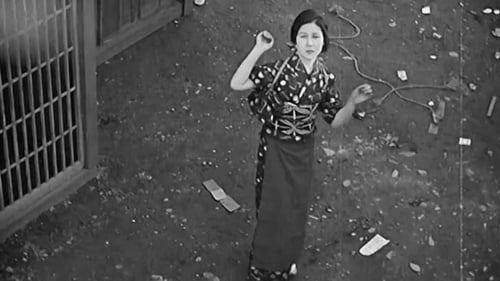
A classic melodramatic love tragedy addressing social inequality in feudal Japan, depicted in Kenji Mizoguchi's typical style. The nostalgic scenes of 1920s Tokyo provides a valuable visual experience set against the background of the title song, "Tokyo March." (Sadly, only 24 minutes of the film now survive.)















